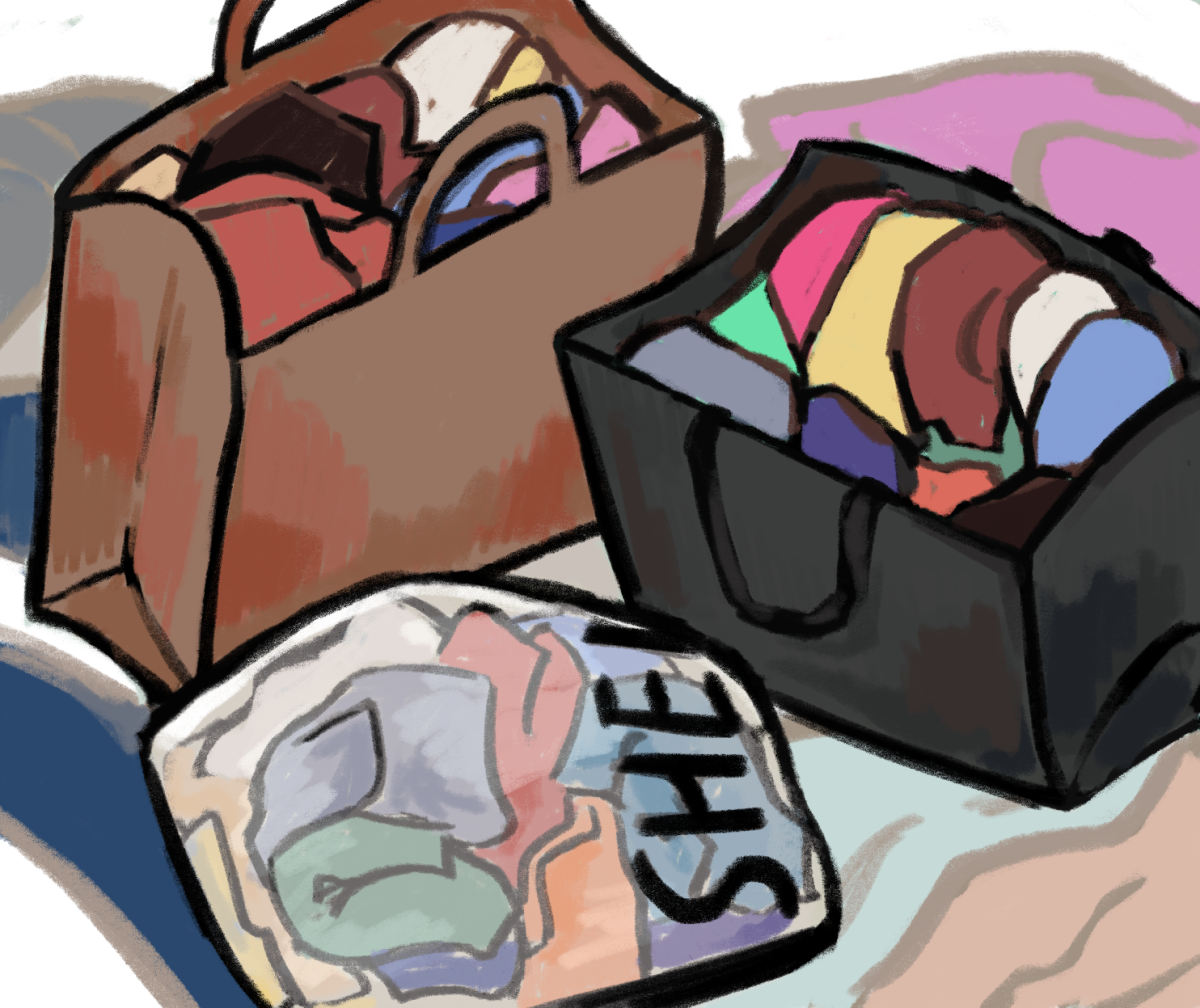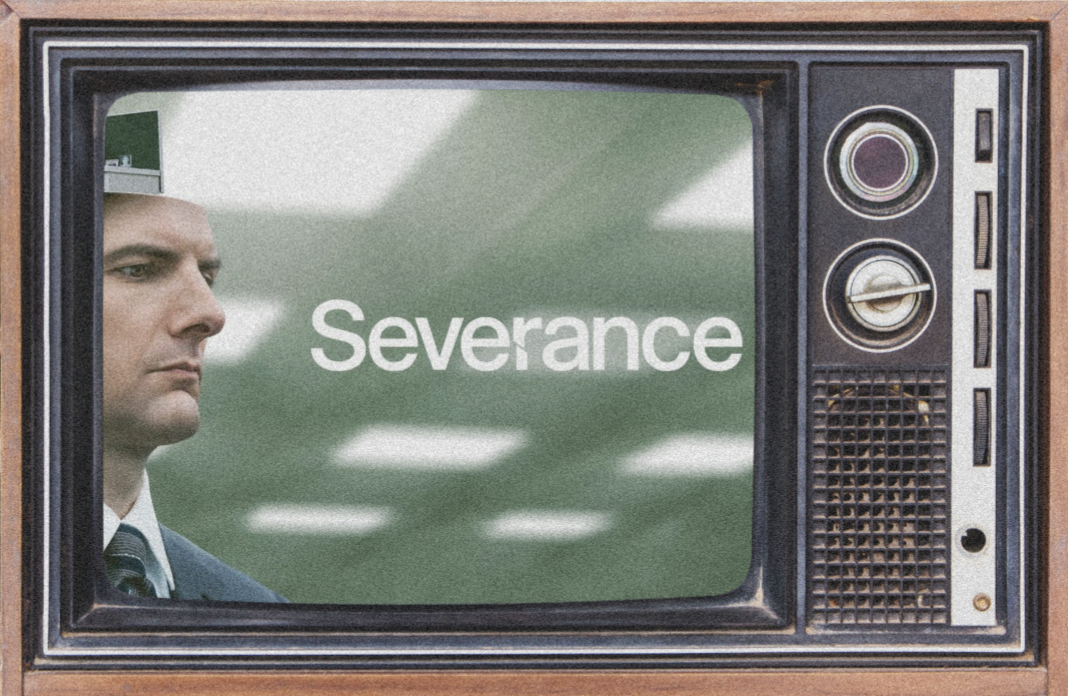Micro-trends, fast fashion and social media have created a generation of overactive consumers with a serious obsession with aesthetics. Whether this week’s “must have” item is a Stanley Cup or a Lululemon belt bag, you can bet you’ll spot it in Pali students’ backpacks in a few days’ time.
According to the United Nations Environment Program, in the past 15 years, there has been a 36 percent decline in how many times a garment is worn. To put this into perspective, items are worn only seven to 10 times on average before being tossed.
This wastefulness speaks to the materialistic lifestyle and consumer culture pushed on Generation Z. Our generation is exposed to a constant flow of excessive, advertisement-focused media on platforms such as TikTok, Pinterest and Instagram, to name a few. Today’s teenagers are subconsciously associating their self-worth with following often expensive fashion trends. Brands know this, and love to capitalize on it by constantly pushing out new “it” products, claiming that they will be a miracle cure to an imperfection.
Trends make people feel comfortable. Clothes and makeup can at least make someone look like they fit in, even if they don’t feel that way. Relying on this for self-validation can lead to major insecurity. Teens become obsessed with buying the latest trends out of fear that if they don’t, people won’t accept them anymore. As a result, they may lose their personal style and become a carbon copy of the people around them. This is a dangerous path that often ends in a shopping addiction and personal insecurities.
Freshman Roxana Bakhtari agrees, saying: “As soon as a piece of clothing is out of style, it makes wearing that clothing less socially acceptable than just wearing something basic that was never a trend in the first place. This is harmful to today’s teens because there is even greater pressure to stay up to date.”
Alternatively, freshman Brigitte Pylen argues that following trends can help people feel more confident.
“When people are trying to find out who they are, the influence of pop culture and media is going to be a big part of that,” Pylen said. “People can look at content to see what they like and don’t like, and then use that information to help feel their best.”
Perhaps more pressing, overconsumption also poses a threat to our planet.
According to Boston University, 34 billion pounds of textile waste is produced every year. In addition, textile production involves the use of toxic dyes and chemicals, which pollute waterways and soil. Moreover, the synthetic fibers found in clothing release microplastics into the environment when they are washed, worsening pollution throughout the planet.
Fast fashion is a significant contributor to the climate crisis, exploiting natural resources to distribute trendy merchandise, all for a shockingly low price. Brand names, their attractive products and their next-to-nothing price tags encourage people to buy a great amount of goods from fast fashion sites, just to throw them out and buy the next best thing as soon as the first is out of fashion. Additionally, fast fashion brands know about the trend cycle and purposefully don’t use high quality materials in their goods, knowing they will be thrown out in just a few months, either due to the garment physically breaking, or it becoming out of style. Irreversible resource depletion, pollution and habitat loss are bound to happen if steps aren’t taken to reduce overconsumption of fast fashion.
Olivia La Via, a senior who is enrolled in the Environmental and Spatial Technologies class, said she is concerned about excessive consumption and its effects on the Earth.
“The most important thing Pali students can do is simply consume less,” La Via said. “The best way to curb waste production is to not produce it in the first place.
She thinks we should look inward when deciding what we consume.
“If you see something on social media that seems like you need to have it, think whether or not it truly serves a purpose,” she added. “Some things seem like a necessity in the moment, but really they will become waste in the future. And if you still believe it is a necessity, try and wait a week before buying. Your happiness shouldn’t have to come from material goods. Thinking before you consume is good for you, the planet and your wallet.”
One of the biggest and most problematic fast fashion brands, Shein, said they make about 50,000 new garments every day.
One way that people attempt to mitigate the effects of overproduction and overconsumption is by donating clothes and purchasing second hand.
However, La Via believes that although people may have good intentions, thrifting may pose additional threats to the planet.
“What once was a sustainable practice has now become people buying hordes of name brand clothes for cheap prices and reselling them on Depop,” La Via said. “Thrifting can be sustainable, as well as buying new clothes, but these can both quickly turn into overconsumption.”
Despite these challenges, there is opportunity for change. By challenging the status quo and reevaluating our relationship with consumption, consumers can build a more sustainable and equitable future. This means shifting our mindset, as a generation, to something more positive, more conscious and less judgmental. Whether it’s resisting the impulse to buy into every trend or making conscious choices to reduce waste, each step taken toward moderation and mindfulness holds the potential to enact meaningful change.









